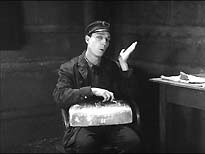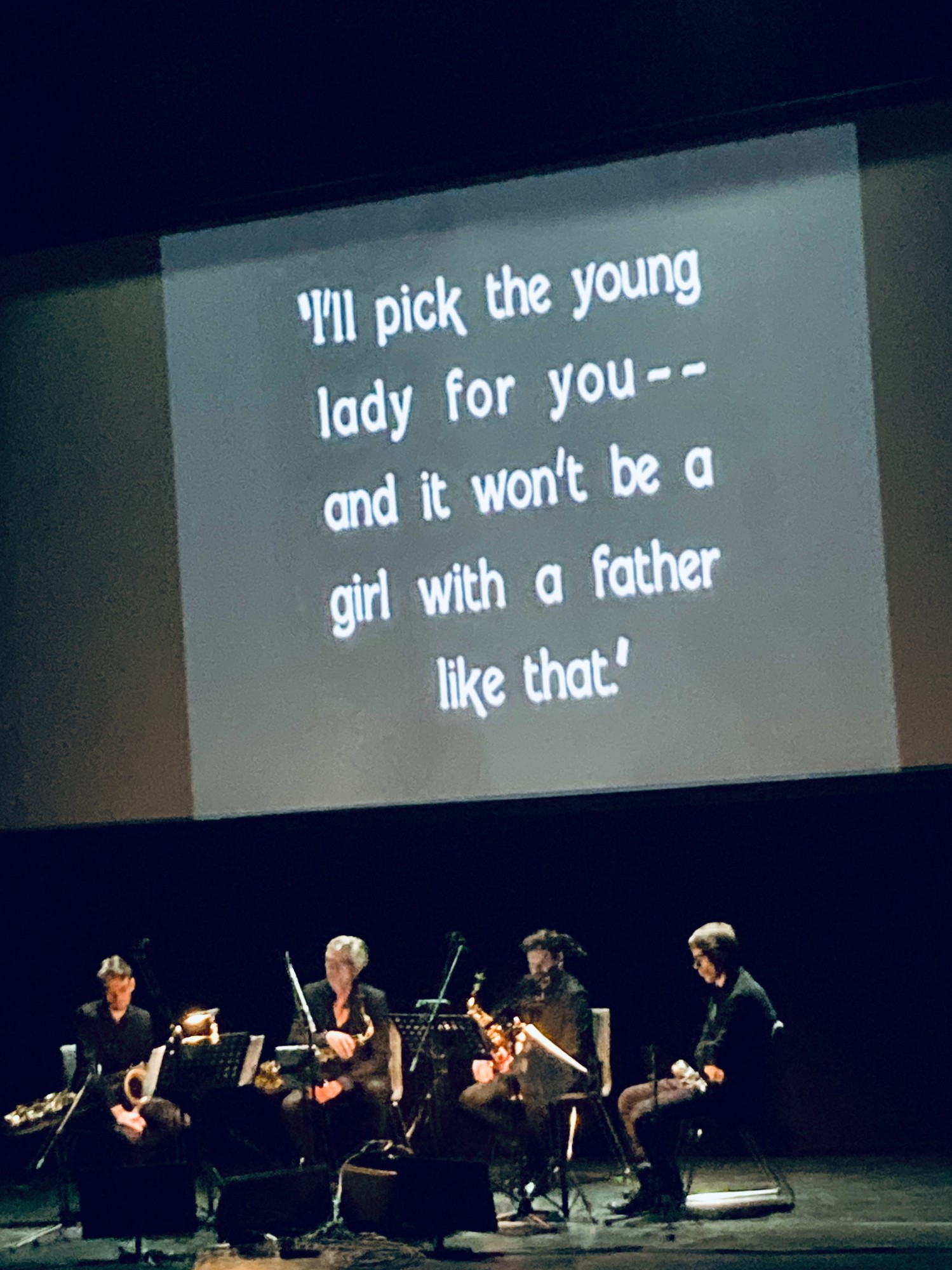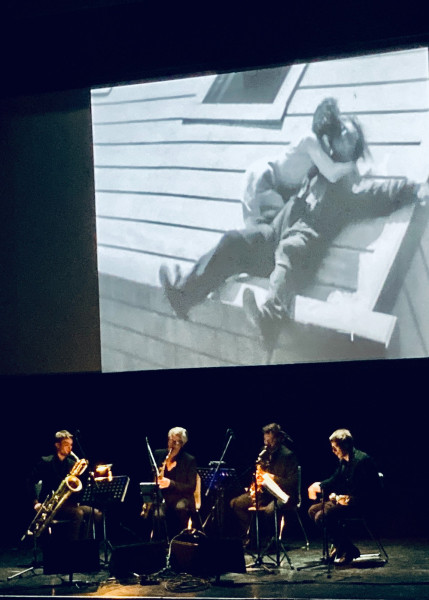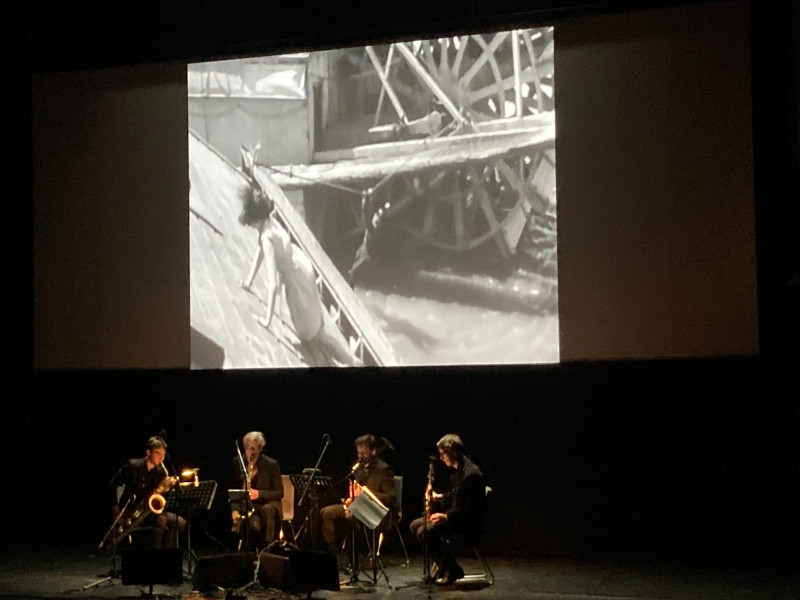Steamboat Bill Jr.
The family film Steamboat Bill jr. is the last movie of Buster Keaton from 1928. Buster Keaton fights in his own typical way against his past, he evokes the autobiographical relationship between father and son in both a tragical and comical way.
This partly autobiographical film was the last completely independent one this famous comedian made before he signed up to MGM. In 1898 the three-year-old Joseph Francis – Buster – Keaton was lifted out of his bed by a tornado and ended up smack on the street, though unhurt.
The spectacular storm scene in Steamboat Bill Junior is only one of the references to Keaton’s youth. In this film he laments in a masterly fashion the fact that his relationship with his father went so awry. His father was a variety artist who, from a very early age, imposed on his son all kinds of acrobatics and a hellish working tempo. This is undoubtedly why the characters drawn in this film are more complex and have greater depth than in Keaton’s previous works
BL!NDMAN [sax] gives colour to this moving film with an effervescent original soundtrack by Eric Sleichim based on their particular saxophone language and sound.
Eric Sleichim: artistic direction, concept and composition
BL!NDMAN [sax]
Pieter Pellens: soprano saxophone
Hendrik Pellens: alto saxophone
Piet Rebel: tenor saxophone
Sebastiaan Cooman: baritone saxophone
Philippe van Leer, Xavier Yerlès: bruitages
Buster Keaton Productions, Black and White, silent movie – 1928
Joseph Schenck: filmproduction
Charles F. Reisner: direction
Buster Keaton: main character
STEAMBOAT BILL JR. is a BL!NDMAN production, coproduced by vooruit with the help of the royal belgian film archive.
première > november 1996



Agenda
The story
Bill Canfield, a forceful, authoritative man, runs an old steamboat on the Mississippi. The competition however, in the shape of a brand new boat belonging to the rich banker John King, threatens to ruin Canfield. He expects to find salvation in the arrival of his son, whom he has not seen for years. But Bill Junior turns out to be a pale, dreamy young man (Buster Keaton, of course), who, to make matters worse, is in love with the daughter of the hated competitor. The misunderstandings between father and son at once provide the most comical situations, but soon show the sour tone of Keaton’s painful childhood memories: Bill senior wants to mould his son in his own image, against the young man’s will, who wants to remain himself. The film, always in burlesque style, is moved along by a dramatic state of affairs: the rivalry between the two captains (and fathers), a thwarted love and Bill Junior’s absolute need to rid himself of his father’s yoke. When a devastating hurricane rises (which releases a tornado of cracks and gags), Bill Junior is given the opportunity to gain his freedom and his beloved, with all the necessary anecdotes and breakneck antics. The Man Who Never Laughs here expresses himself to perfection. And with grandeur.
The music
BL!NDMAN probably gets more out of the saxophone than its inventor ever suspected was possible. The four members of the quartet make just as much use of the squeaking springs and tapping mechanisms as of the tonal qualities with which the instrument is blessed. They mould the sounds of the valves into full notes or let plopping and sucking sounds bubble up out of their saxophones in the form of compelling melodies… BL!NDMAN leaves no valve or vibe unturned in the search for a new life for the saxophone. BL!NDMAN once more shows its innovative side in the live accompaniment they are providing for Buster Keaton’s Steamboat Bill Junior. This original composition by Eric Sleichim not only gives us a refreshing new look at the film, but is a worthwhile piece in itself. Apart from the eccentric task of providing sound effects, the saxophone quartet mainly plays a firmly balanced score which, in combination with special effects, results in a tempestuous soundtrack.



